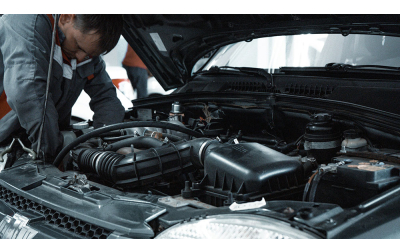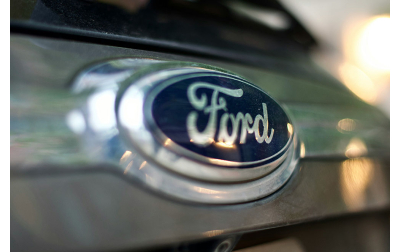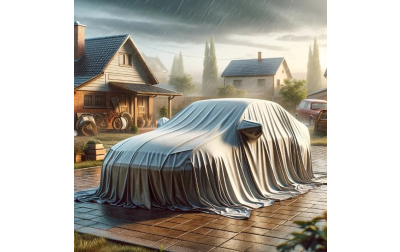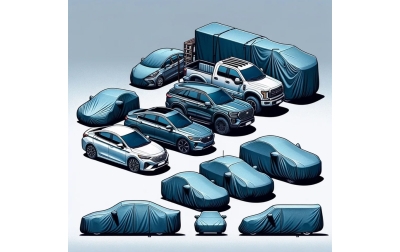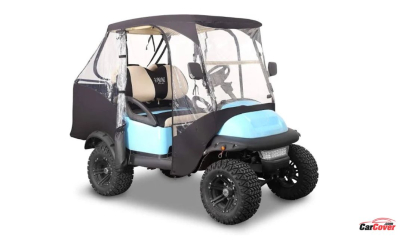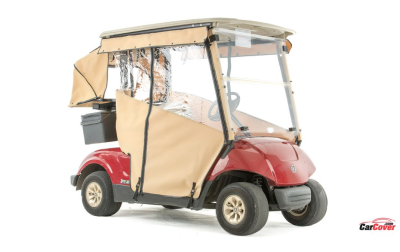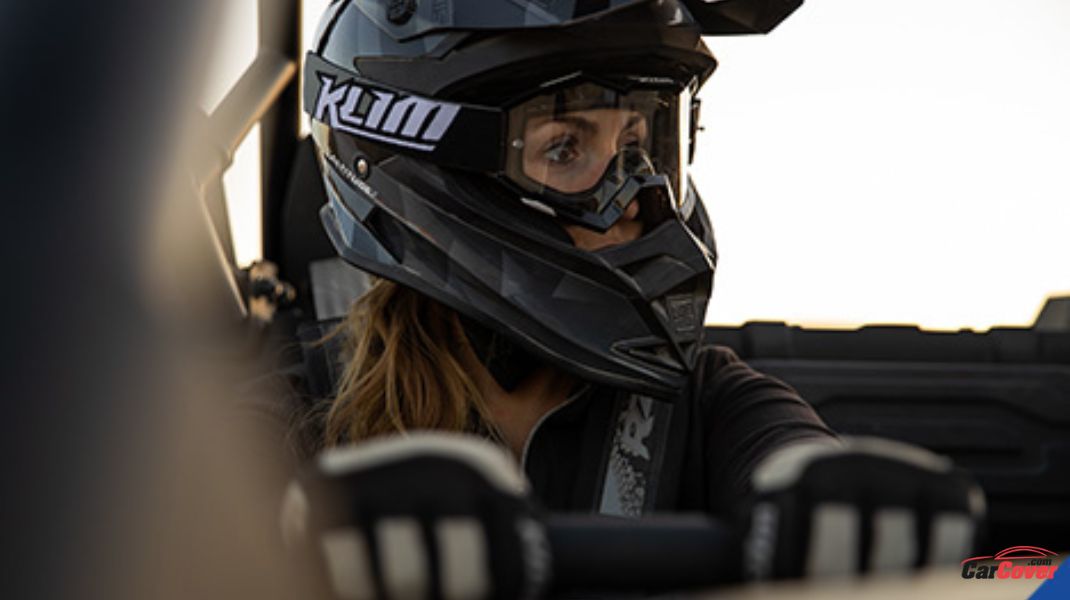
Ride in Safety and Style: All You Need To Know About ATV Helmet
If you have just acquired a new ATV, you're likely eager to embrace outdoor adventures. While an ATV is an ideal companion for both work and leisure, embarking on your rides necessitates the proper protective gear. Among all the essentials for your ATV, a helmet takes precedence. This vital safety gear becomes paramount in safeguarding you during potential accidents involving your ATV. Prioritize your safety and that of your loved ones by ensuring the consistent and proper use of helmets while operating an ATV.
Benefits of Wearing an ATV Helmet
Wearing an All-Terrain Vehicle helmet gives a few fundamental benefits that are vital for your security and security whereas riding. Here are a few of the key points of interest:
Head Protection
- The primary purpose of an ATV helmet is to safeguard the head from impacts and potential injuries during accidents.
- Helmets act as a crucial barrier, reducing the risk of severe head trauma and protecting the rider's most vital organ.
Prevention of Brain Injuries
- Helmets are instrumental in preventing traumatic brain injuries. By absorbing and distributing impact forces, helmets significantly reduce the chances of concussions and other serious brain injuries that may result from accidents.
Reduced Risk of Facial Injuries
- ATV helmets not only shield the head but also provide protection for the face. In the event of a crash, helmets with face shields or visors can prevent facial injuries from debris, branches, or other hazards encountered on off-road trails.
Compliance with Safety Regulations
- Wearing an ATV helmet is often a legal requirement, complying with safety regulations in many jurisdictions. Adhering to these regulations not only avoids legal consequences but also reinforces responsible riding practices.
Eye Protection
- Helmets equipped with face shields or goggles offer crucial eye protection. Off-road environments can expose riders to dust, dirt, insects, and debris. A helmet with eye protection ensures clear vision and shields the eyes from potential hazards.
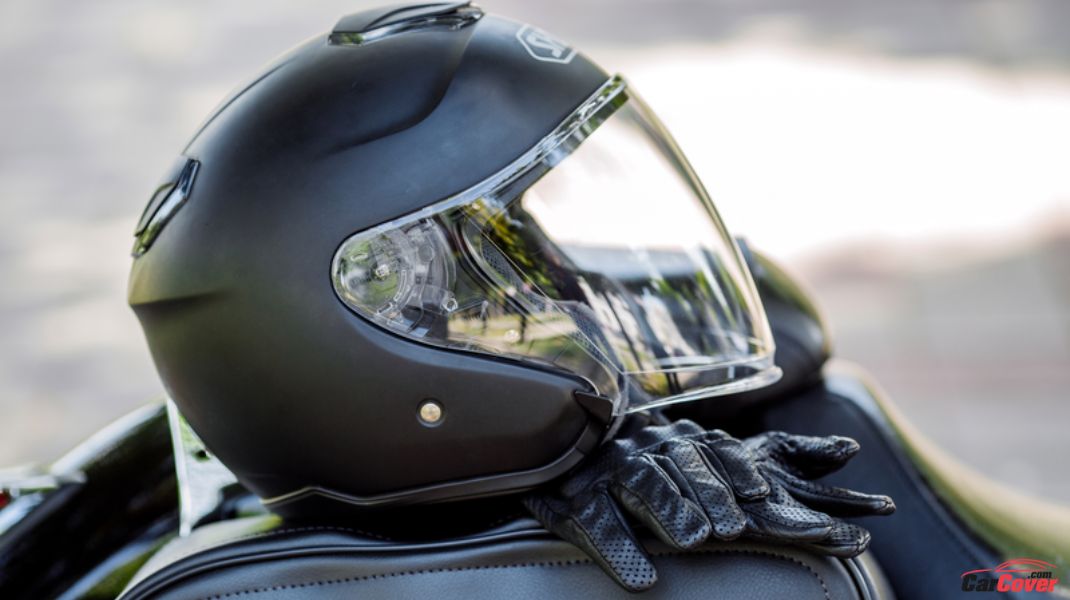

Enhanced Visibility
- Some ATV helmets come with reflective elements or vibrant colors that enhance visibility. This feature is particularly important for riders in varied terrains and different lighting conditions, increasing their visibility to other riders and vehicles.
Improved Hearing Protection
- ATV helmets can help reduce noise exposure during rides. The design of helmets minimizes wind and engine noise, contributing to better hearing protection. This is essential for maintaining situational awareness and communication while riding.
Increased Confidence
- Wearing a helmet instills confidence in riders, knowing they have taken a proactive step to prioritize their safety. This increased confidence can positively impact their riding experience, allowing them to focus on enjoying the adventure.
Setting a Positive Example
- Riders who consistently wear helmets set a positive example for others, encouraging responsible riding habits within the ATV community. This collective commitment to safety contributes to a safer and more enjoyable riding environment for everyone.
Safety and Thermal Comfort
- Apart from serving as a safeguard during potential accidents, an ATV helmet equipped with a visor or goggles provides additional protection against natural elements. When navigating wooded areas, the helmet shields against branches and twigs, and safeguards the rider from mud and gravel splashing up from the wheels.
- Ensuring a snug fit is crucial – the helmet should enclose the head securely without causing discomfort.
- If the helmet turns when the chin strap is tightened, consider opting for a smaller size. In winter, the helmet acts as a reliable insulator, providing warmth. Conversely, during summer rides, opting for a well-ventilated helmet is preferable, ensuring a cool head and preventing goggles from fogging up.
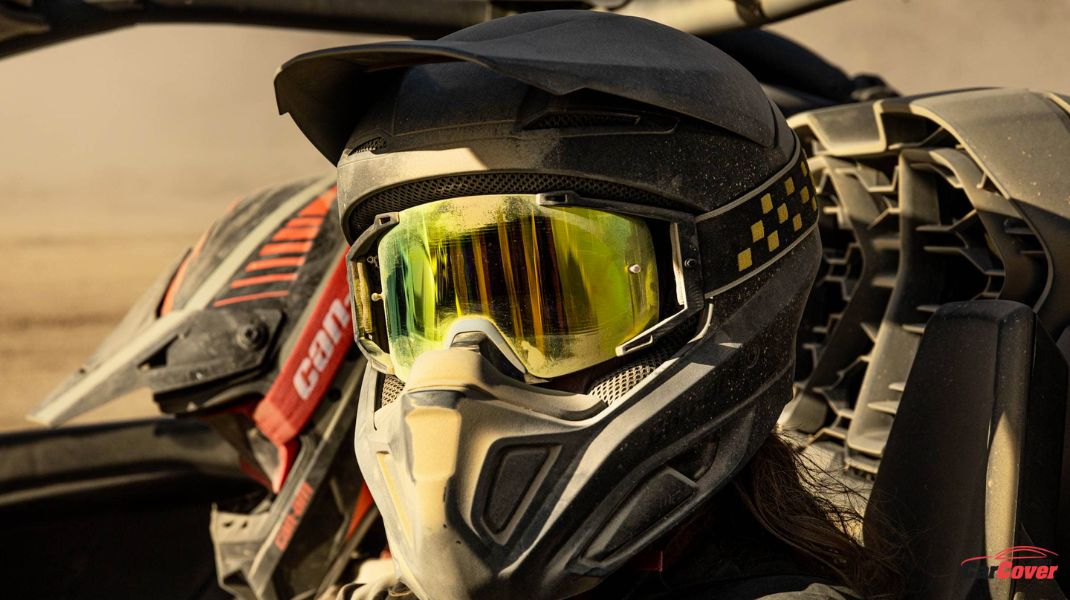

Different Types of ATV Helmets
There are a few sorts of All-Terrain Vehicle helmets accessible, each planned to cater to diverse inclinations, riding styles, and levels of security. Here are a few of the common sorts:
- Full-face helmet: This sort of head protector gives the foremost comprehensive security, covering the whole head, counting the face and chin. It features a sturdy chin bar and a full visor or face shield, offering protection against impacts, debris, and wind. Full-face helmets are suitable for high-speed riding and off-road adventures.
- Modular helmet: Also known as flip-up helmets, modular helmets offer the advantages of both full-face and open-face helmets. They have a hinged visor that allows the front section to flip up, converting the helmet into an open-face style when needed. When fully closed, it provides full-face protection. This flexible design will bring convenience to ATV riders who can choose to reveal their faces while riding or not.
- Open-face helmet: Open-face helmets cover the top and sides of the head but lack a chin bar or face shield, leaving the face exposed. Although these helmets provide less protection than full-face helmets, they feature excellent ventilation and visibility. They are often favored by riders who prefer a more open riding experience in less risky environments.
- Half helmet (or Shorty helmet): Half helmets give the slightest sum of security among all ATV helmet types because it just covers as if it were the beat of the head, taking off the confront, ears, and back of the head uncovered. Half helmets are suitable for riders who prioritize comfort and prefer a more open feel but may not offer sufficient protection in high-impact scenarios.
- Off-road/motocross helmet: These helmets are designed specifically for off-road riding and are characterized by their extended visors, chin vents, and aggressive styling. They offer amazing security against roost and debris and jetsam commonly experienced whereas riding off-road. Motocross protective caps are regularly lightweight and well-ventilated, making them appropriate for strongly off-road exercises.
- Dual-sport helmet: Dual-sport helmets combine highlights of both full-face protective caps and motocross protective caps, making them flexible for both road and off-road riding. They ordinarily have a visor, expansive confront shield, and great ventilation, making them appropriate for a wide extent of riding conditions.
When choosing an ATV protective cap, consider variables like security certifications, fit, consolation, ventilation, and the particular sort of riding you will be doing. Continuously decide on a protective cap that meets the vital security benchmarks, because it plays a pivotal part in securing your head amid ATV rides.
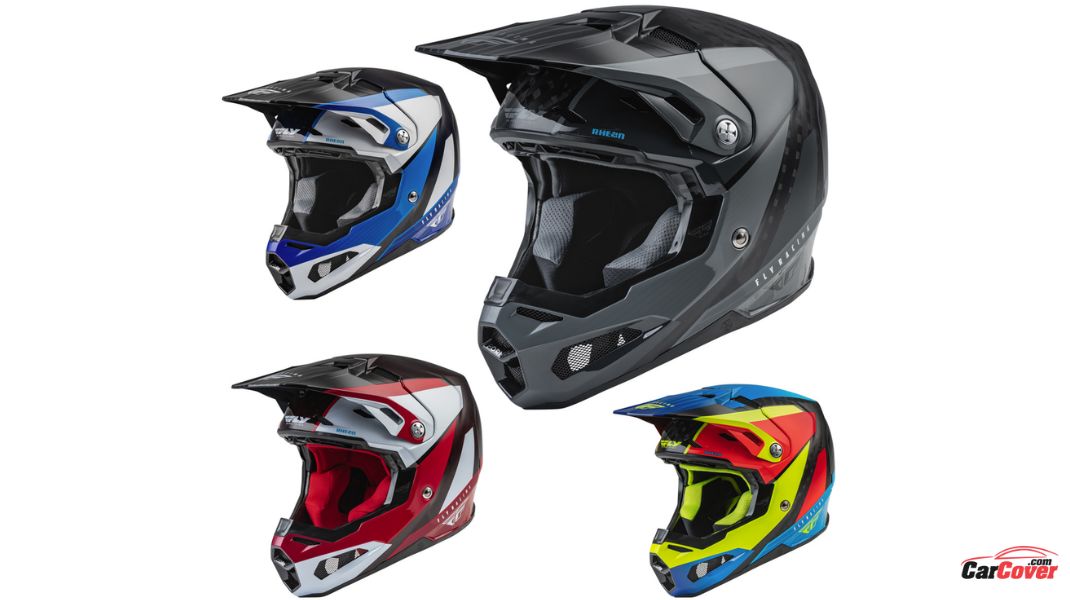

How to Determine Which Size of Helmet You Need
Differences in ATV helmet sizing among manufacturers underscore the importance of a personalized fitting experience. It is crucial to physically try on the helmet before making a purchase, ensuring that it aligns seamlessly with your unique head shape and size. For online purchases, meticulous attention to the manufacturer's provided measurements is essential.
Utilize a tailor measuring tape to accurately measure the circumference of your skull, positioning the tape approximately one inch above your brow.
This precision ensures a thorough assessment of your head size, enabling you to cross-reference the obtained measurements with the manufacturer's sizing chart. Taking these careful steps guarantees that you make an informed decision about the most appropriate ATV helmet size, tailored to provide optimal comfort and safety for your individual needs.
How Should a Helmet Fit?
When assessing the fit of a helmet, initiate the process by positioning it securely on your head and proceeding to tighten the chin strap. Ensure that the strap is snug yet comfortable, providing a secure hold.
Perform a gentle head shake test to confirm that the helmet neither moves nor falls off during movement. To further evaluate the fit, attempt to insert a finger between your head and the interior padding near the forehead – the fit should be snug enough to restrict finger insertion. Simultaneously, place your hand at the back of the helmet to ascertain that it cannot be pulled off from this direction.
It's normal for the helmet to feel slightly tight initially. As you use it, the padding will gradually soften and conform to your head shape. If, however, the tightness persists after several uses, it may indicate that the helmet is undersized, requiring reconsideration for optimal comfort and safety.
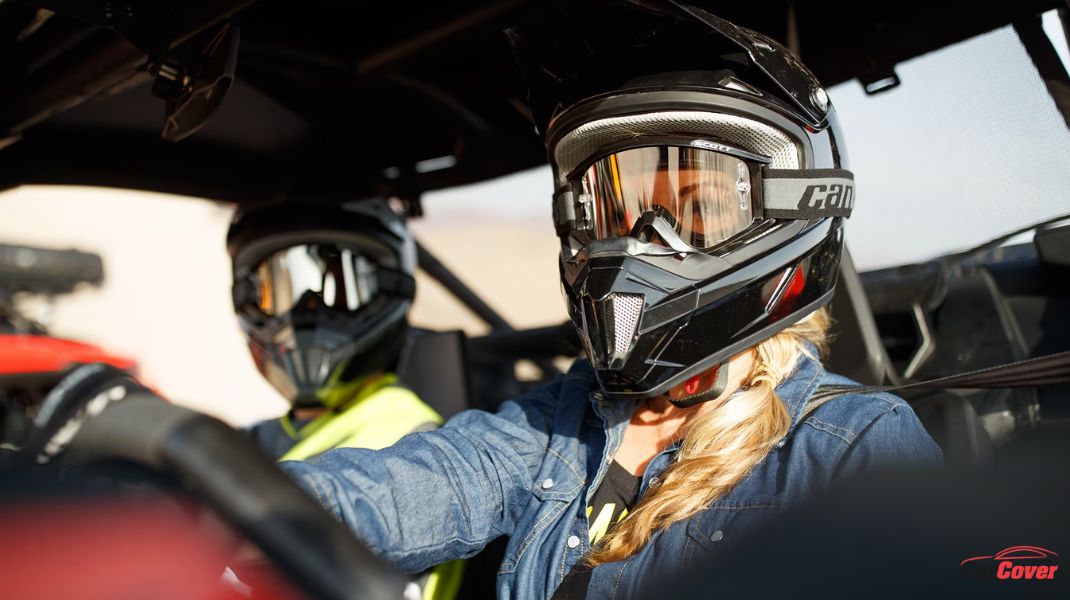

The Most Important Factors When Selecting an ATV Helmet
In addition to considering size and type, there are various other factors to take into account when choosing a helmet. For frequent helmet use, you might prefer one with removable interiors, allowing you to easily take out the lining for washing. If versatility is a key requirement, certain helmets offer replaceable shields, enabling you to switch to a tinted one – particularly beneficial for rides in summer or when dealing with the low winter sun.
Safety Standards to Prioritize
- When prioritizing safety, it's essential to look for two specific certifications – DOT and Snell ratings. DOT ratings, governed by the Ministry of Transportation, indicate whether the helmet meets or exceeds their safety standards.
- Opting for a helmet that surpasses these standards is preferable. Additionally, Snell ratings involve rigorous safety testing, making helmets with such ratings an excellent choice, especially for challenging terrains.
Ideal Helmets for Different Seasons
- In scorching summer conditions, where dry dirt and dust are prevalent, it's crucial to have a helmet that not only covers your face and mouth but also provides sufficient ventilation. Off-roading helmets are well-suited for this purpose.
- Conversely, during winter months when wet mud is a concern, prioritizing clear vision becomes essential. Helmets with a full face or easy-to-wipe design, such as modular helmets, are more appropriate for this type of weather. Proper ventilation remains crucial even in winter to prevent fogging issues.
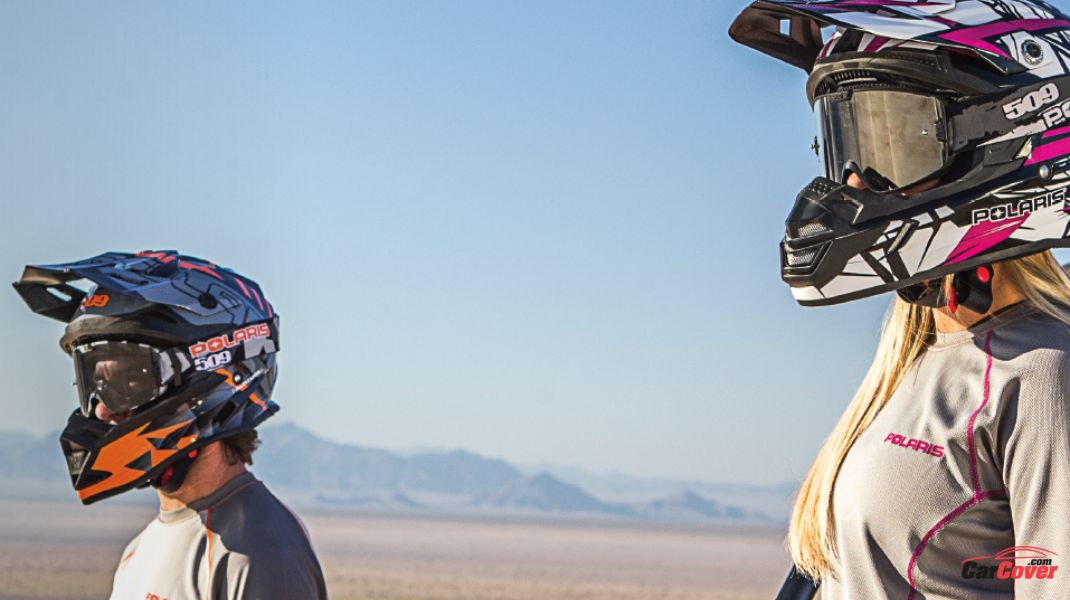

Management of Rotation
- Ensure that the helmet is designed with a low-friction layer, such as the Mips safety system, aimed at reducing rotational force to the head during specific angled impacts.
Comfort and Proper Fit
- Individuals have diverse head shapes and fitting preferences. Consider factors ranging from sizing to retention systems and straps to ensure optimal comfort and fit.
Availability of Replacement Parts
- Opt for a helmet from a reputable manufacturer, making it convenient to order replacement parts in case of a damaged visor, a broken buckle, or a lost cheek pad.
Brand and Aesthetic Appeal
- With numerous excellent ATV helmets on the market, select one from a brand you are familiar with and trust. Choose a style that not only suits your preferences but also motivates you for an enjoyable ride.
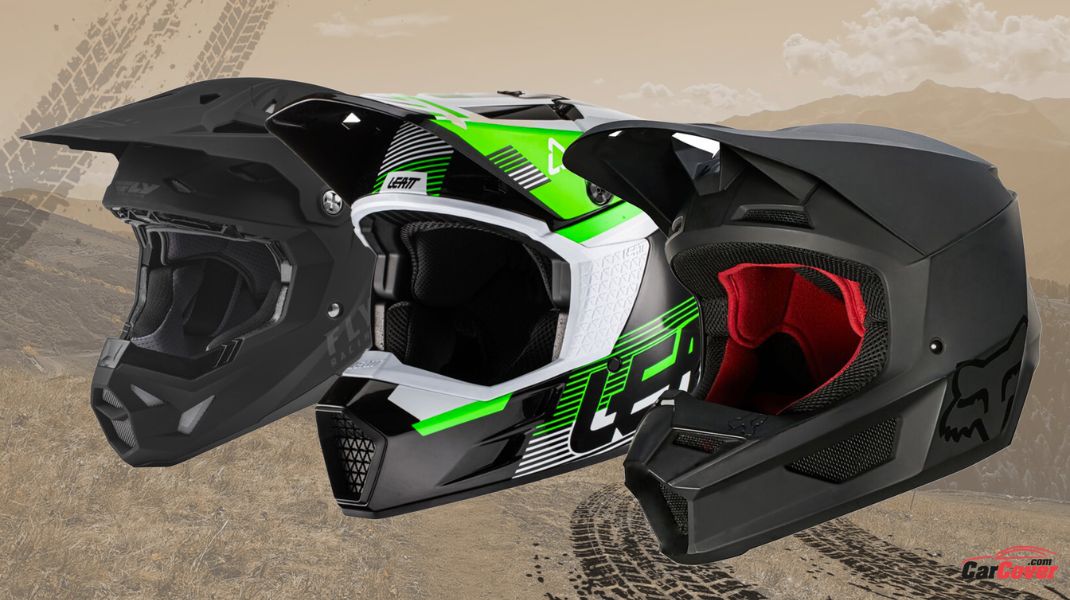

Related Top 14 Best Classic Off-Road Vehicles Of All Time
FAQs
What is the difference between a bike helmet and an ATV helmet?
ATV helmets are made for the manner you ride and the risks you'll encounter off-road, whereas motorcycle helmets are made for the needs and risks of riding on the road. A motorcycle helmet could be appropriate, depending on how you want to operate your ATV.
Is a bike helmet OK for ATVs?
Underage ATV/UTV drivers and passengers must wear helmets that meet the minimum DOT requirements for ATVs or motorcycles and have the chin strap secured securely. Helmets for bicycles do not satisfy this criteria. All UTV passengers must always wear their seatbelts.
How long is an ATV helmet good for?
The majority of ATV helmet producers advise changing your helmet after five years from the date of purchase. Some advise updating the helmet five years after it was made, while some even suggest doing it every three years.
Why do ATV helmets have visors?
The visor, often known as the peak, is a feature of dirt bike helmets that provides the rider with UV protection by either providing shade or shielding the rider's eyes from direct sunlight. Additionally, it will serve as a defense against "roost" (flying dirt and track debris) and tree branches that are encountered during trail riding.
Can I use an ATV helmet for other activities like biking or snowmobiling?
While ATV helmets provide protection, it's recommended to use helmets designed for specific activities. Each type of helmet is engineered with features suited for the unique risks associated with the intended activity.
How often should I replace my ATV helmet?
Helmets should be replaced every five to seven years, even if they appear undamaged. Factors like exposure to sunlight, impact, and wear can affect the helmet's structural integrity. Regularly inspect the helmet for signs of damage and replace it if needed.
Final Thoughts
In conclusion, investing in and prioritizing the use of an ATV helmet is paramount for any off-road enthusiast. The importance of head protection cannot be overstated, considering the potential risks and uncertainties that come with ATV riding. The helmet serves as a crucial barrier against accidents, impacts, and external elements, offering not only safety but also enhanced comfort and weather resilience. Choosing the right size, ensuring a proper fit, and understanding the maintenance and replacement guidelines are integral steps in maximizing the effectiveness of an ATV helmet. Whether navigating wooded trails or enjoying the thrill of off-road adventures, the ATV helmet stands as a fundamental accessory that promotes responsible riding practices and contributes significantly to an enjoyable and secure ATV experience.



